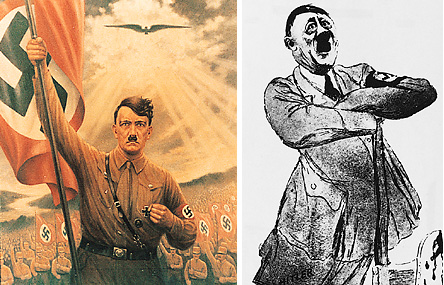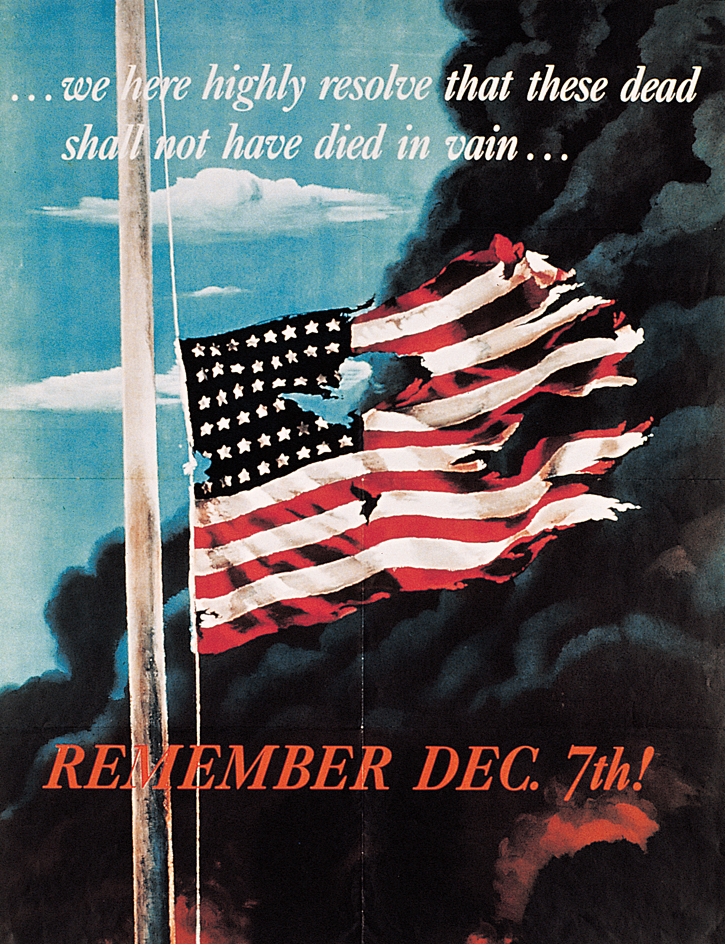Propaganda is one-sided communication designed to influence people’s thinking and actions. A television commercial or a poster urging people to vote for a political candidate might be propaganda, depending on its method of persuasion.
Propaganda differs from education in democratic societies. But education in a dictatorship can involve teaching children and youth by techniques that could be classified as propaganda. Educators in democratic societies teach people how to think, but propagandists tell them what to think. Most educators are willing to change their opinions on the basis of new evidence, but propagandists ignore evidence that contradicts them. Educators present all sides of an issue and encourage debate. Propagandists build the strongest possible case for their views and discourage discussion.

The intention of the communicator to influence or deceive is an important issue in identifying propaganda. However, experts disagree about what is propaganda and what is not, and whether propaganda differs from other forms of persuasion, such as advertising and political campaigning. Some look upon all slanted communication as propaganda. Others believe that the method of persuasion determines whether a message is propaganda. For example, the majority of advertisers and political campaigners function openly and state their purposes truthfully. Other advertisers and political campaigners present any combination of truths, half-truths, lies, and distortions that they think will most effectively influence their audience. Some experts say all these people are propagandists. Others regard only the second group as propagandists.
Some people consider propaganda neither good nor bad. For example, many favor the use of propaganda to raise money for charity. Other individuals argue that the public needs reliable information to make wise decisions, and that propaganda blocks the spreading of such information. They also fear that propaganda deadens people’s power of reasoning. The results of some propaganda may be short term and relatively insignificant, such as the purchase of a product. Other types of propaganda can have more serious results.
The greatest use of propaganda occurs during wartime. At such times, government propaganda campaigns urge people to save resources, volunteer for military service, support the war effort, and make sacrifices necessary for victory. Psychological warfare is a type of propaganda that aims to weaken the enemy’s will to fight or belief in their government. A related technique, called brainwashing, is used against prisoners. It combines political propaganda with harsh treatment to reduce a prisoner’s resistance.

Much wartime propaganda is called covert (secret) propaganda because it comes from hidden sources. For example, a propagandist might try to discourage enemy troops by sending them counterfeit newspapers reporting huge losses among their forces. Some covert propaganda is spread by people in a country who secretly support its enemies. A group of such people is called a fifth column. The opposite of covert propaganda is called overt (open) propaganda, which comes from known sources.
How propaganda works
Propaganda appeals to its audience in three ways. (1) It calls for an action or opinion that it makes seem wise and reasonable. (2) It suggests that the action or opinion is moral and right. (3) It provides a pleasant feeling, such as a sense of importance or of belonging.
Many propaganda methods are common-sense techniques that resemble those of persuasive speaking. These techniques include gaining people’s trust, simplicity and repetition, and the use of symbols. However, propagandists often use such underhanded methods as distortion, concealment, and lying. In nations ruled by dictators, governments increase the effectiveness of their propaganda by using censorship.
Gaining people’s trust.
Above all, propagandists must be believable, and their audience must consider them reliable authorities. One way to gain an audience’s trust is to report unfavorable news that the audience knows or will discover. During World War II (1939-1945), the British Broadcasting Corporation (BBC) made propaganda broadcasts to Europe. The BBC began many newscasts with a report of British defeats and losses. This practice helped give the BBC a worldwide reputation for truthfulness.
Another way to gain people’s trust is to agree with their existing opinions. Scientists have found that people place most trust in speakers and writers whose ideas are similar to their own. As a result, propaganda is most successful if much of it agrees with what people already believe and if only a little of it is new.
Simplicity and repetition.
Propaganda must be easy to understand and to remember. As far as possible, propagandists make their appeals in simple, catchy slogans that they repeat over and over. The Nazi dictator Adolf Hitler wrote: “The intelligence of the masses is small. Their forgetfulness is great. They must be told the same thing a thousand times.”
The use of symbols
involves words and illustrations that bring strong responses from people. Individuals react not only to the actual meaning of words and the actual content of pictures but also to the feelings aroused by such symbols. For example, nearly all cultures have favorable reactions to a picture of a mother and baby or to such words as homeland and justice. Propagandists try to create an association in people’s minds between such symbols and the messages they are trying to spread. Powerful negative images are frequently used to increase prejudice, hostility, and hatred toward the desired targets of propaganda.
Distortion and concealment.
Propagandists deliberately exaggerate the importance of some facts and twist the meaning of others. They try to conceal facts that might prevent the response they seek from people. They also try to shift attention away from embarrassing facts that cannot be hidden.
Lying.
Deliberate lying is relatively rare as a propaganda technique because propagandists fear their lies might be discovered and they might lose their audience’s trust. Propaganda usually includes some accurate information. But some propagandists readily lie if they think they can deceive their audience. Propagandists may believe in their causes, but their chief goal is to shape and control the public’s beliefs and actions.
Censorship
is most common where the government controls the newspapers, television, and other means of communication. It increases the effectiveness of propaganda because the government can silence people who contradict its official views. See Censorship .
Who uses propaganda?
Propaganda comes from many sources. Three of the most important ones are (1) governments, (2) organizations, and (3) businesses.
Governments.
Nearly all governments, including democratic ones, use propaganda to win support from other nations. Governments also sponsor propaganda and information programs to promote desired behavior among their own citizens. For example, government propaganda might urge people to support certain policies or to oppose foreign political systems.
Organizations
represent members of various professions, religions, and many other fields. During election campaigns, many organizations distribute propaganda that supports candidates who agree with their views. Between elections, organizations may also use propaganda to influence public opinion. Many groups employ people called lobbyists, who work to persuade legislators to support their programs. A group that tries to further its own interests by exerting pressure on legislators or other officials is often called a pressure group. Group members outline their goals on such controversial topics as abortion, busing, civil rights, the environment, foreign policy issues, gun control, and nuclear energy.
Businesses
often use propaganda in their advertising. For example, a mouthwash commercial on television might be aimed at people’s desire to be attractive and popular. Advertising agencies employ psychologists and other social scientists to study why people buy certain products. They try to determine what slogans will lead to purchases. Many large businesses also have public relations departments that use propaganda to spread favorable opinions of company policies.
History
Today, the word propaganda suggests shady or underhanded activity, but that was not its original meaning. The term came from the Latin name of a group of Roman Catholic cardinals, the Congregatio de Propaganda Fide (Congregation for the Propagation of the Faith). Pope Gregory XV established the committee—called the propaganda for short—in 1622 to supervise missionaries. Gradually, the word came to mean any effort to spread a belief. It acquired its present meaning after World War I (1914-1918), when writers exposed the dishonest but effective techniques that propagandists had used during the war.
Propaganda as it is used today began in the early 1900’s. V. I. Lenin, who led the revolution that established Communist control of Russia, emphasized the importance of propaganda. He distinguished between two types of persuasion—propaganda and agitation. Lenin regarded propaganda as the use of historical and scientific arguments to convince the well-educated minority. He defined agitation as the use of half-truths and slogans to arouse the masses, whom he considered incapable of understanding complicated ideas. Traditionally, each Communist Party has included a unit that specializes in agitprop—agitation and propaganda.
During World War I,
the Allies—including Britain, France, Russia, and the United States—fought the Central Powers, led by Germany. The warring nations conducted widespread propaganda operations. The major U.S. propaganda effort was handled by an agency called the Committee on Public Information. The committee distributed more than 100 million posters and publications designed to increase support for the war.
Between the wars,
several famous dictators used propaganda to help them achieve power. In 1922, Benito Mussolini established a Fascist dictatorship in Italy. Fascist propaganda promised to restore Italy to the glory of ancient Rome. Joseph Stalin, who became dictator of the Soviet Union by the late 1920’s, used propaganda and terrorism to crush all opposition. The Soviet Union had been formed under Russia’s leadership in 1922. In 1933, Adolf Hitler set up his Nazi dictatorship in Germany. The Nazis’ effective use of education, motion pictures, press, and radio to shape opinion and behavior remains one of the most famous examples of propaganda.

During World War II,
Germany, Italy, and Japan fought Britain, the Soviet Union, the United States, and the other Allies. All of the major powers spread far-reaching propaganda. The United States had two primary propaganda agencies. The Office of War Information handled overt propaganda, and the Office of Strategic Services (OSS) carried on covert operations.
After World War II
ended in 1945, the Cold War began. The Communist nations, led by the Soviet Union, and the non-Communist nations, led by the United States, used a variety of propaganda techniques to influence world opinion, as well as their own citizens.
In 1953, the U.S. government created the U.S. Information Agency (USIA) to create support of its foreign policy. The Voice of America, the radio division of the USIA, broadcast entertainment, news, and propaganda throughout the world. The government used the Central Intelligence Agency (CIA) to spread covert propaganda against governments unfriendly to the United States. These governments included those of the Soviet Union and the Communist countries of Eastern Europe. The CIA also provided funds to establish radio networks called Radio Free Europe and Radio Liberty, which broadcast to Communist countries.
Since 1960.
In the early 1960’s, China began to challenge the Soviet Union for leadership of the Communist world, and a bitter propaganda struggle developed between them. Each accused the other of betraying Communism. After 1970, several Communist and non-Communist nations at times enjoyed friendlier relations and altered their propaganda operations against one another. The United States and the Soviet Union enjoyed such relations in the early 1970’s and beginning again in the late 1980’s. In 1989 and the early 1990’s, Communists lost control of the governments of many Eastern European countries and the Soviet Union, and in 1991 the Soviet Union broke up into a number of independent states. However, Radio Free Europe continued to broadcast to Eastern Europe, and Radio Liberty kept transmitting to former Soviet areas. In addition, Voice of America continued to broadcast throughout the world. Radio Free Asia, another U.S. service, began broadcasting in 1996. Its programs are transmitted to China, North Korea, and Southeast Asia. Propaganda is still used today in many nations.
